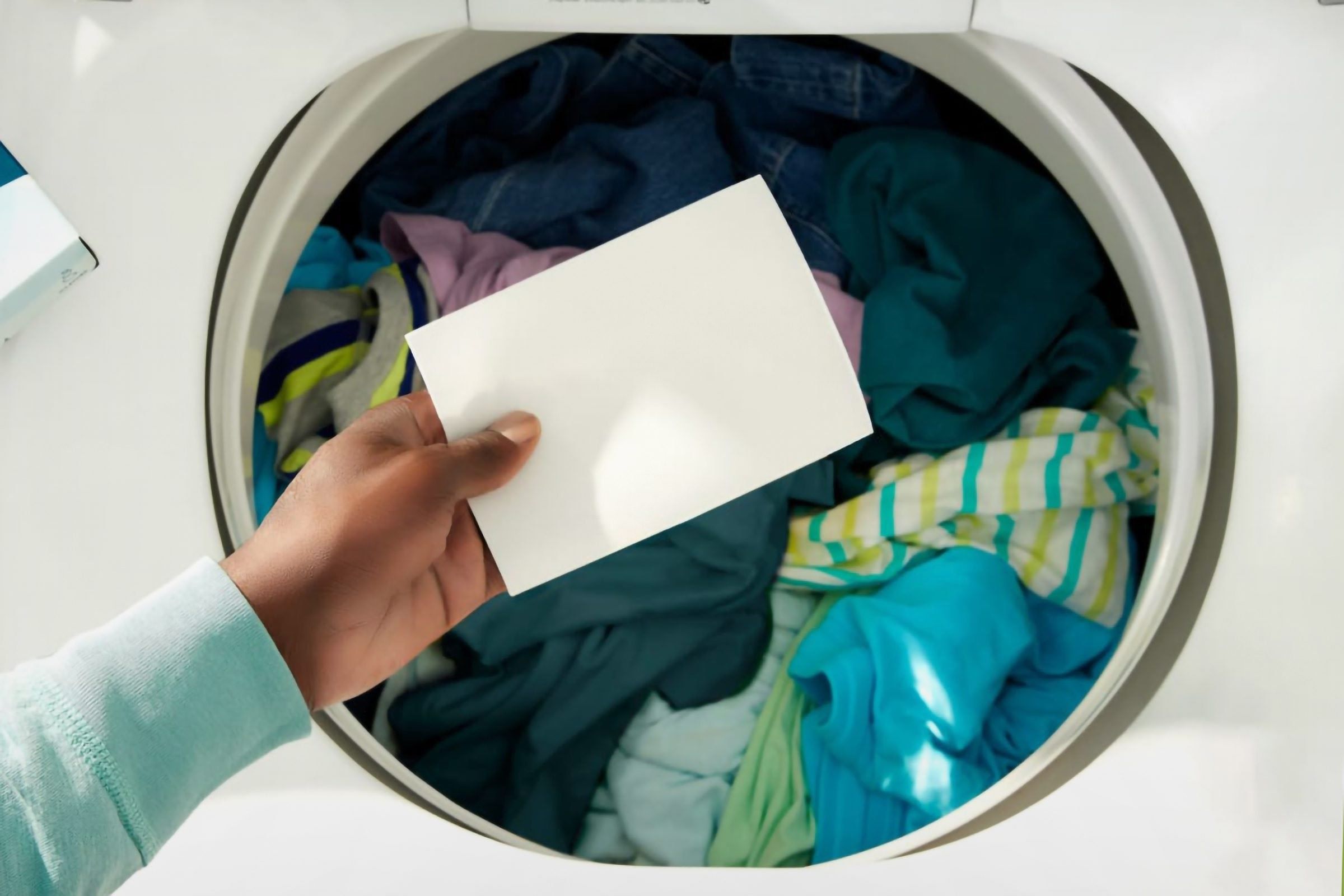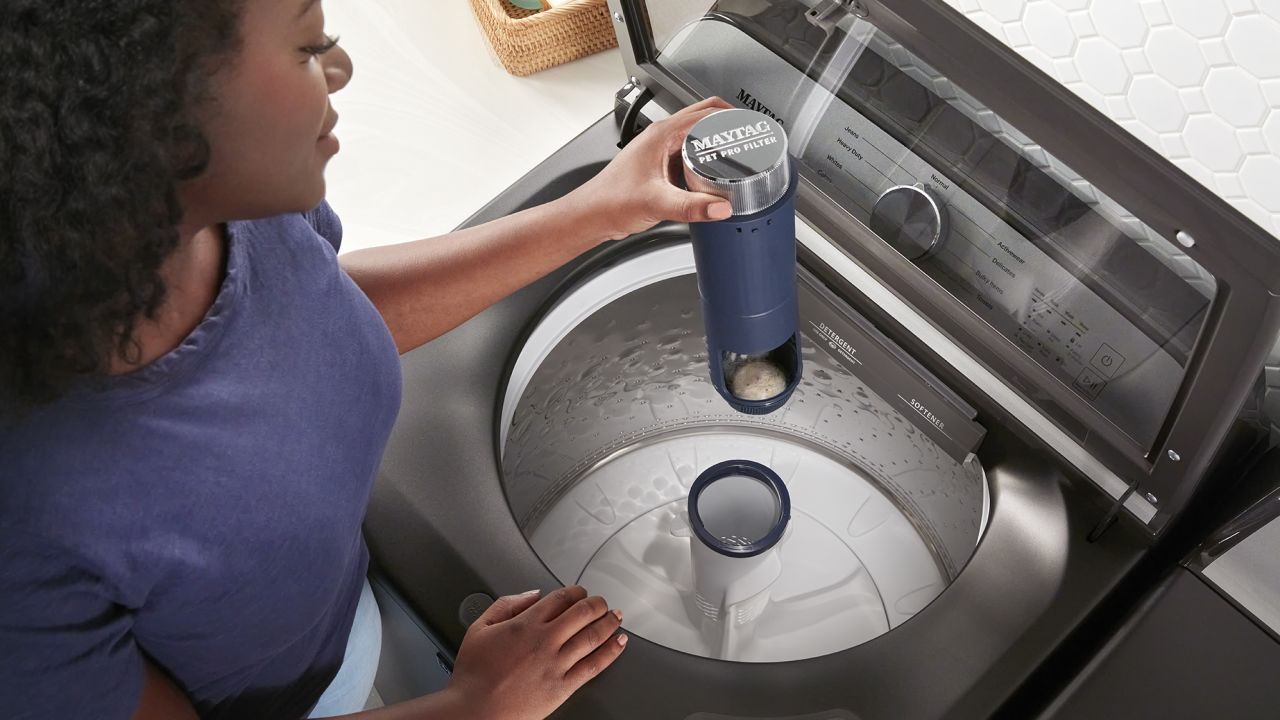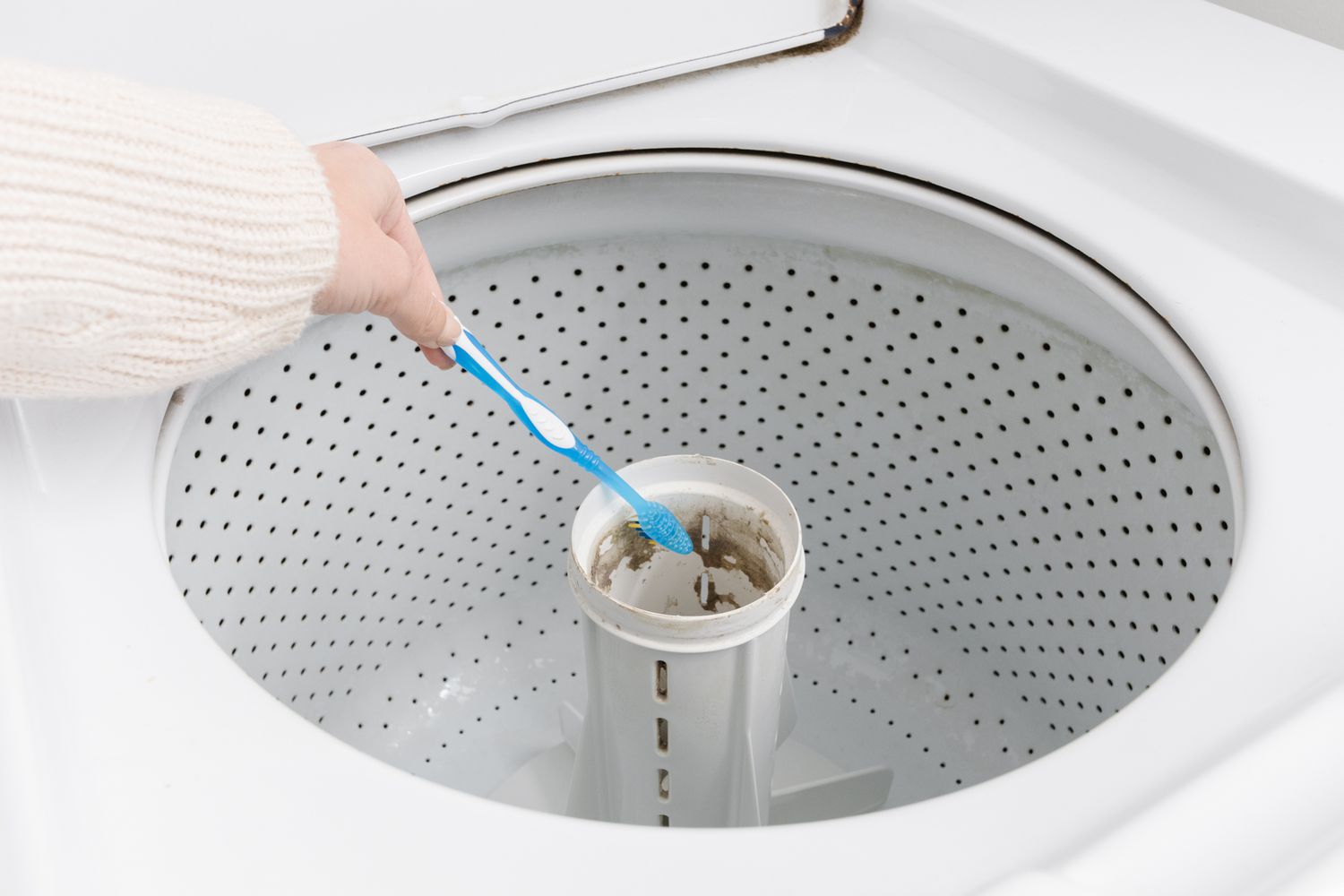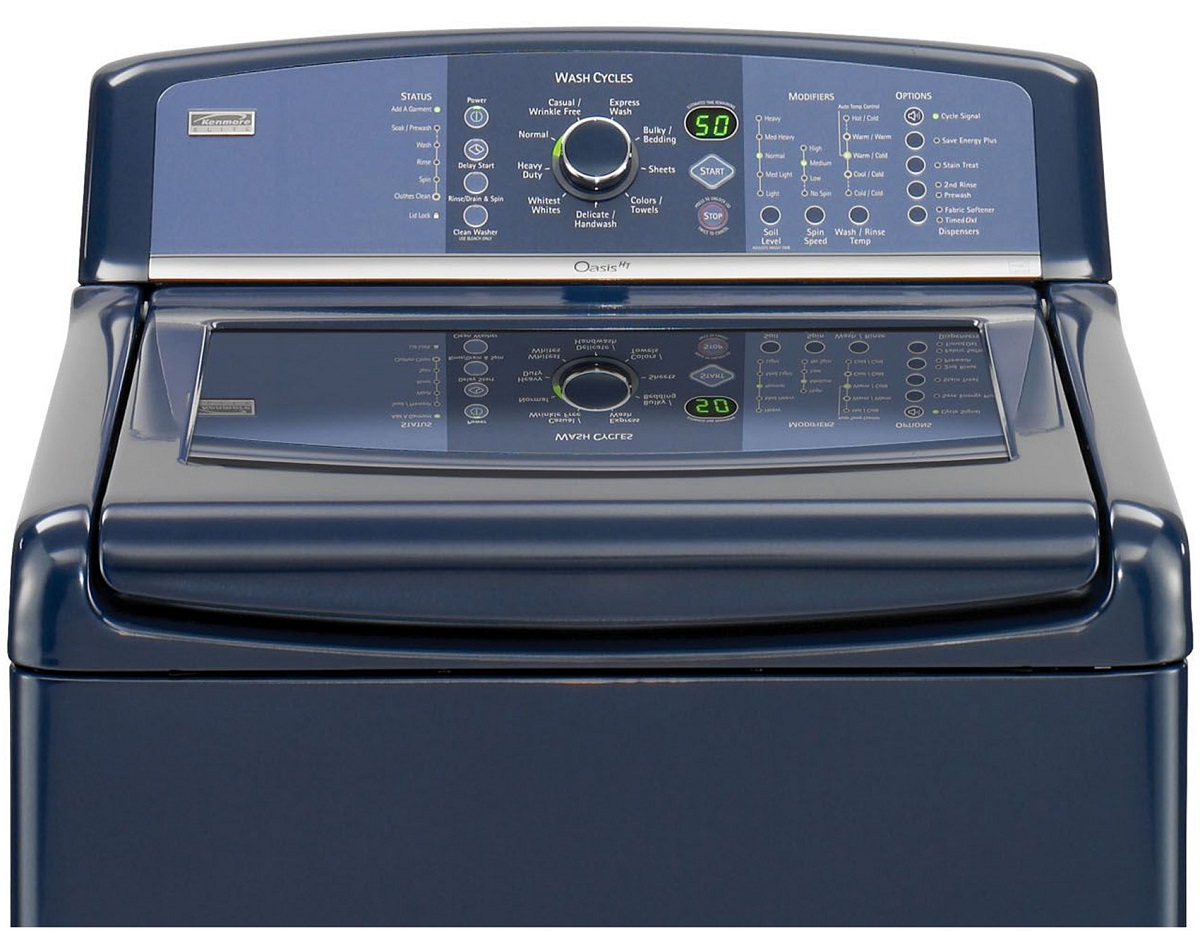Home>Home Appliances>Laundry Appliances>How To Strip Sheets In The Washing Machine


Laundry Appliances
How To Strip Sheets In The Washing Machine
Published: February 23, 2024
Learn how to efficiently strip sheets in the washing machine with our expert laundry appliance tips. Keep your linens fresh and clean effortlessly!
(Many of the links in this article redirect to a specific reviewed product. Your purchase of these products through affiliate links helps to generate commission for Storables.com, at no extra cost. Learn more)
Introduction
When it comes to maintaining a clean and comfortable home, fresh and crisp bed sheets play a pivotal role. However, over time, bed sheets can accumulate dirt, sweat, and other residues, leading to a less-than-pleasant sleeping experience. Fortunately, with the help of a reliable washing machine, you can easily restore your bed sheets to their pristine condition.
In this comprehensive guide, we will walk you through the step-by-step process of effectively stripping your sheets in the washing machine. Whether you're dealing with stubborn stains, lingering odors, or simply want to refresh your bedding, this method will help you achieve the desired results with minimal effort.
By following these simple yet effective steps, you can ensure that your bed sheets are thoroughly cleaned and revitalized, promoting a hygienic and cozy sleeping environment. So, gather your supplies and get ready to transform your bed sheets from lackluster to luxuriously clean!
Key Takeaways:
- Transform your bed sheets from lackluster to luxuriously clean by pre-treating stains, selecting the right settings, and embracing eco-friendly practices for a hygienic and cozy sleeping environment.
- Infuse your bedding with renewed freshness and comfort by diligently loading the washing machine, adding the optimal amount of detergent, and carefully drying your bed sheets for a rejuvenating experience.
Step 1: Gather Your Supplies
Before embarking on the journey of revitalizing your bed sheets, it's essential to gather all the necessary supplies. Having the right tools at your disposal will streamline the process and ensure that you can tackle any stains or odors effectively. Here's what you'll need:
-
Bed Sheets: Start by collecting the bed sheets that require cleaning. It's advisable to strip all the bedding from the mattress, including the fitted sheet, flat sheet, and pillowcases, to give them a thorough wash.
-
Stain Remover: Depending on the nature of the stains, having a reliable stain remover on hand can make a significant difference. Look for a product that is suitable for the specific type of stains you're dealing with, whether it's food, sweat, or other common culprits.
-
Laundry Detergent: Opt for a high-quality laundry detergent that is designed to tackle tough stains and odors. Consider using a detergent that is gentle on fabrics yet potent enough to deliver a deep clean.
-
Fabric Softener (Optional): If you prefer your bed sheets to have a soft and fragrant finish, consider using a fabric softener. This can add a touch of luxury to your bedding and enhance the overall sleeping experience.
-
Washing Machine: Of course, you'll need access to a reliable washing machine equipped with the appropriate settings for washing bed sheets. Ensure that the machine is clean and in good working condition to achieve optimal results.
-
Dryer or Drying Rack: After the washing cycle, you'll need a means to dry the bed sheets. Whether you use a dryer or a drying rack, make sure it's clean and ready to accommodate the freshly washed bedding.
-
Water and Energy-Efficient Practices: Consider using cold water for washing, as it can help preserve the integrity of the fabric and minimize energy consumption. Additionally, being mindful of water and energy usage aligns with sustainable living practices.
By gathering these supplies, you'll be well-prepared to embark on the journey of stripping your bed sheets in the washing machine. With the right tools at your disposal, you can effectively tackle stains, refresh the fabric, and ensure that your bed sheets emerge from the washing machine revitalized and ready to adorn your bed once again.
Step 2: Pre-Treat Stains
Before loading your bed sheets into the washing machine, it's crucial to address any stubborn stains that may have taken residence on the fabric. Pre-treating stains can significantly enhance the effectiveness of the washing process, ensuring that the stains are thoroughly lifted and the bed sheets emerge from the wash cycle looking fresh and pristine.
To begin the pre-treatment process, carefully examine the bed sheets for any visible stains or spots. Common culprits such as food stains, sweat marks, or discolorations may require targeted attention to achieve optimal results. Once you've identified the areas in need of pre-treatment, follow these steps to effectively address the stains:
-
Identify the Nature of the Stains: Understanding the nature of the stains is essential for selecting the appropriate pre-treatment method. For organic stains such as food or bodily fluids, enzymatic stain removers can be highly effective. Alternatively, for oil-based stains, a solvent-based pre-treatment product may be more suitable.
-
Apply the Stain Remover: Using a targeted approach, apply the chosen stain remover directly to the affected areas. Ensure that the product is evenly distributed and thoroughly saturates the stains. Gently massage the stain remover into the fabric, allowing it to penetrate and begin breaking down the stains.
-
Allow for Dwell Time: After applying the stain remover, allow it to dwell on the fabric for the recommended duration. This dwell time is crucial for the active ingredients in the stain remover to effectively loosen and lift the stains from the fibers of the bed sheets.
-
Spot Testing: If you're using a new stain remover or treating delicate fabrics, it's advisable to conduct a spot test in an inconspicuous area of the bed sheets. This ensures that the product does not cause any adverse reactions or damage to the fabric.
-
Gentle Agitation: For particularly stubborn stains, gently agitate the fabric by lightly scrubbing the treated areas with a soft-bristled brush. This can help to further loosen the stains and enhance the effectiveness of the pre-treatment process.
By diligently pre-treating stains before loading the bed sheets into the washing machine, you can effectively target and address stubborn marks, ensuring that the washing cycle can focus on thoroughly cleansing the fabric. This proactive approach sets the stage for a successful washing process, allowing the detergent and machine settings to work in harmony with the pre-treated areas, ultimately resulting in revitalized and stain-free bed sheets.
Step 3: Load the Washing Machine
With the pre-treatment of stains completed, it's time to transition to the pivotal stage of loading the bed sheets into the washing machine. This step is crucial in ensuring that the bed sheets are positioned optimally for a thorough and effective cleansing process. By following these guidelines, you can maximize the washing machine's capabilities and set the stage for revitalizing your bed sheets.
Sorting and Separation
Begin by sorting the bed sheets based on color, fabric type, and level of soiling. This step is essential for preventing color transfer and ensuring that delicate fabrics are not subjected to harsh washing conditions. Separating heavily soiled items from lightly soiled ones allows for tailored washing cycles, optimizing the cleaning process.
Read more: How To Reset A Washer
Loading Capacity
Be mindful of the washing machine's loading capacity and avoid overfilling it with bed sheets. Overcrowding the machine can impede the circulation of water and detergent, compromising the overall cleaning efficacy. Aim to load the bed sheets loosely, allowing ample room for movement within the machine during the wash cycle.
Focused Arrangement
When placing the bed sheets into the washing machine, pay attention to the arrangement to promote even distribution of water and detergent. Avoid bundling or folding the sheets tightly, as this can hinder the cleaning process. Instead, gently drape the bed sheets into the machine, ensuring that they are evenly spread out for optimal exposure to the cleansing elements.
Considered Detergent Dispensing
Prior to adding the bed sheets, carefully measure and dispense the appropriate amount of laundry detergent. Refer to the detergent manufacturer's guidelines for the recommended dosage based on load size and soil level. Evenly distribute the detergent within the machine before introducing the bed sheets, ensuring that it is effectively incorporated into the washing process.
Mindful Settings Selection
Select the washing machine settings that align with the specific requirements of the bed sheets. Consider factors such as fabric type, colorfastness, and the recommended water temperature. By tailoring the settings to suit the bed sheets' needs, you can optimize the cleaning process and safeguard the fabric's integrity.
By meticulously loading the bed sheets into the washing machine and adhering to these best practices, you can set the stage for a successful and thorough cleansing process. This thoughtful approach ensures that the bed sheets receive the care and attention they deserve, ultimately leading to revitalized and freshly laundered bedding.
Read more: How To Move Washer
Step 4: Choose the Right Settings
Selecting the appropriate settings on your washing machine is a critical step in ensuring that your bed sheets receive the optimal treatment during the laundering process. By carefully considering factors such as fabric type, soil level, and colorfastness, you can tailor the settings to meet the specific needs of your bed sheets, ultimately leading to a thorough and effective cleaning cycle.
Consider Fabric Type and Care Instructions
Before adjusting the settings, take into account the fabric type of your bed sheets. Whether they are made of cotton, linen, silk, or a blend of materials, each fabric has unique characteristics that influence the ideal washing conditions. Additionally, refer to the care label instructions on your bed sheets to determine any specific recommendations provided by the manufacturer.
For durable fabrics such as cotton and linen, a regular or heavy-duty setting may be suitable, allowing for a more vigorous wash cycle to tackle stubborn stains and deeply embedded dirt. Conversely, delicate fabrics like silk or satin may require a gentle or hand wash setting to prevent damage and preserve the fabric's luxurious texture.
Assess Soil Level and Water Temperature
Assess the level of soiling on your bed sheets to gauge the appropriate water temperature for the wash cycle. For heavily soiled sheets, a warmer water temperature can enhance the detergent's effectiveness in lifting dirt and stains. However, for lightly soiled or delicate sheets, a cooler water temperature can prevent excessive agitation and minimize the risk of shrinkage or color fading.
Mindful Selection of Cycle Duration and Spin Speed
When choosing the washing cycle duration, consider the overall cleanliness of your bed sheets and the time required for a thorough wash. Longer cycles with extended soaking or agitation periods can be beneficial for heavily soiled sheets, allowing the detergent to penetrate the fabric and loosen tough stains. Conversely, for lightly soiled sheets, a shorter cycle may suffice, conserving energy and water while achieving satisfactory results.
Additionally, adjust the spin speed based on the fabric type and the desired moisture level post-wash. Higher spin speeds can effectively extract excess water from durable fabrics, expediting the drying process. However, for delicate or lightweight sheets, opting for a lower spin speed can prevent excessive wrinkling and potential damage to the fabric fibers.
By thoughtfully selecting the right settings on your washing machine, you can customize the laundering process to suit the specific requirements of your bed sheets. This tailored approach ensures that the fabric is treated with care and precision, resulting in freshly laundered bed sheets that are thoroughly cleansed and ready to adorn your bed with renewed freshness.
Read more: How To Disinfect Washer
Step 5: Add Detergent
The addition of detergent is a pivotal step in the process of revitalizing your bed sheets in the washing machine. The choice of detergent and the method of dispensing it can significantly impact the cleanliness and freshness of your bedding. By following these guidelines and best practices, you can ensure that your bed sheets receive the optimal amount of detergent, setting the stage for a thorough and effective cleansing cycle.
Consider Load Size and Soil Level
Before adding detergent to the washing machine, carefully assess the size of the bed sheet load and the level of soiling. For larger loads or heavily soiled sheets, a slightly higher detergent dosage may be necessary to effectively tackle dirt, stains, and odors. Conversely, for smaller loads or lightly soiled sheets, a moderate amount of detergent can suffice, preventing excessive suds and conserving the product.
Measure with Precision
When dispensing detergent, it's crucial to measure the appropriate amount with precision. Refer to the detergent manufacturer's guidelines for the recommended dosage based on load size and soil level. Using a measuring cup or the designated dispenser in your washing machine, carefully pour the detergent, ensuring that it is evenly distributed within the machine. Avoid overpouring or underutilizing the detergent, as both scenarios can impact the cleaning efficacy and the overall freshness of your bed sheets.
Selecting the Right Detergent
The choice of detergent plays a significant role in the cleansing process. Opt for a high-quality laundry detergent that is formulated to address tough stains, eliminate odors, and preserve the integrity of the fabric. Consider using a detergent that is suitable for your specific fabric type, whether it's cotton, linen, silk, or a blend. Additionally, if you prefer a fragrance-free or hypoallergenic option, select a detergent that aligns with your preferences and any sensitivities within your household.
Read more: How To Start The Washing Machine
Eco-Friendly Considerations
For environmentally conscious individuals, selecting an eco-friendly or biodegradable detergent can align with sustainable living practices. These detergents are designed to minimize environmental impact while delivering powerful cleaning performance. By opting for eco-friendly options, you can contribute to sustainable laundry practices and promote a healthier planet while ensuring that your bed sheets receive a thorough and gentle cleansing.
By adhering to these guidelines and considerations when adding detergent to the washing machine, you can optimize the cleansing process for your bed sheets. This mindful approach ensures that the detergent effectively targets dirt and stains, leaving your bed sheets fresh, clean, and ready to envelop you in comfort and tranquility.
Step 6: Start the Wash Cycle
With the bed sheets loaded into the washing machine and the detergent properly dispensed, it's time to initiate the wash cycle to commence the thorough cleansing process. The selection of the appropriate wash cycle and the activation of the machine are pivotal in ensuring that your bed sheets emerge revitalized and impeccably clean.
Cycle Selection
Carefully assess the fabric type, soil level, and any specific care instructions provided by the manufacturer when choosing the wash cycle. For durable fabrics such as cotton or linen, a regular or heavy-duty cycle may be suitable for effectively lifting dirt and stains. Conversely, delicate fabrics like silk or satin may require a gentle or hand wash cycle to prevent damage and preserve the fabric's luxurious texture.
Temperature Consideration
Select the water temperature that aligns with the level of soiling on your bed sheets. For heavily soiled sheets, a warmer water temperature can enhance the detergent's effectiveness in lifting dirt and stains. However, for lightly soiled or delicate sheets, a cooler water temperature can prevent excessive agitation and minimize the risk of shrinkage or color fading.
Read more: How To Clean A Whirlpool Washer
Cycle Initiation
Once the appropriate cycle and water temperature settings are selected, initiate the wash cycle to set the cleansing process in motion. The gentle hum of the washing machine signals the beginning of the transformative journey for your bed sheets. As the machine agitates and circulates the water and detergent, the fabric undergoes a thorough and meticulous cleansing, ensuring that dirt, odors, and impurities are effectively eradicated.
Patience and Vigilance
During the wash cycle, exercise patience and vigilance as the machine diligently tends to your bed sheets. Monitor the cycle's progression, ensuring that the machine operates smoothly and efficiently. This attentive approach allows you to oversee the cleansing process, ensuring that your bed sheets receive the care and attention they deserve.
Anticipating Freshness
As the wash cycle nears its completion, anticipate the moment when your bed sheets emerge from the machine, revitalized and imbued with a newfound freshness. The rhythmic sound of the machine signals the culmination of the cleansing journey, heralding the transformation of your bed sheets from lackluster to luxuriously clean.
By meticulously initiating and overseeing the wash cycle, you set the stage for the successful revitalization of your bed sheets. This thoughtful and attentive approach ensures that the fabric is treated with care and precision, resulting in freshly laundered bed sheets that are thoroughly cleansed and ready to adorn your bed with renewed freshness.
Step 7: Dry the Sheets
After the thorough cleansing journey in the washing machine, the next crucial step in revitalizing your bed sheets is the drying process. Proper drying not only ensures that the fabric is free from excess moisture but also contributes to the overall freshness and comfort of your bedding. By following these guidelines and best practices, you can effectively dry your bed sheets, preparing them to adorn your bed with renewed vitality.
Read more: How To Reset A GE Washer
Prompt Removal from the Washing Machine
Upon the completion of the wash cycle, promptly remove the bed sheets from the washing machine to initiate the drying process. Avoid leaving the damp sheets in the machine for an extended period, as this can lead to the development of musty odors and wrinkles. By promptly attending to the drying phase, you can maintain the cleanliness and freshness achieved during the wash cycle.
Shake Out and Smooth Wrinkles
Before transferring the bed sheets to the dryer or drying rack, gently shake them out to release any excess water and minimize wrinkles. Smooth out the fabric with your hands, ensuring that the sheets are evenly spread out and free from any folds or creases. This preparatory step sets the stage for effective drying and contributes to the overall appearance of the bed sheets once they are fully dried.
Considered Drying Method
When it comes to drying your bed sheets, you have the option of using a dryer or a drying rack, each offering unique benefits. If using a dryer, select the appropriate setting based on the fabric type and the desired level of dryness. Opt for a medium heat setting to prevent excessive shrinkage and preserve the fabric's integrity. Alternatively, if using a drying rack, ensure that the sheets are positioned in a well-ventilated area with ample air circulation to facilitate thorough drying.
Mindful Folding and Storage
Once the bed sheets are fully dried, promptly fold them to minimize wrinkles and preserve their pristine condition. Store the freshly laundered sheets in a clean and dry linen closet or designated storage area, ensuring that they are readily accessible when it's time to make the bed. By adopting a mindful approach to folding and storage, you can maintain the cleanliness and freshness of your bed sheets until they are ready to adorn your bed once again.
By adhering to these best practices for drying your bed sheets, you can complete the revitalization process with precision and care. The thorough drying of your bed sheets ensures that they emerge from the laundering journey with renewed freshness and a pristine appearance, ready to envelop you in comfort and tranquility as you indulge in a restful night's sleep.
Read more: How To Calibrate Whirlpool Washer
Conclusion
In conclusion, the process of stripping sheets in the washing machine is a transformative journey that revitalizes your bedding, ensuring that it remains fresh, clean, and inviting. By following the comprehensive steps outlined in this guide, you can effectively address stains, select the appropriate settings, and initiate a thorough cleansing cycle, ultimately leading to the emergence of revitalized bed sheets.
From the initial step of gathering the necessary supplies to the final phase of drying the sheets, each stage of the process is infused with care, precision, and a commitment to achieving optimal cleanliness. Pre-treating stains with targeted products and techniques sets the stage for a successful wash cycle, ensuring that stubborn marks are effectively addressed. The careful loading of the washing machine, coupled with the precise addition of detergent, maximizes the effectiveness of the cleansing process, setting the foundation for the emergence of fresh and revitalized bed sheets.
The thoughtful selection of wash cycle settings, water temperature, and cycle duration ensures that the fabric is treated with the utmost care, safeguarding its integrity while achieving thorough cleanliness. The culmination of the process in the drying phase further enhances the freshness and comfort of the bed sheets, preparing them to adorn your bed with renewed vitality.
By embracing eco-friendly considerations, mindful folding, and storage practices, you can extend the longevity of your bed sheets while contributing to sustainable living. The culmination of these efforts results in bedding that not only looks and feels fresh but also promotes a hygienic and inviting sleeping environment.
As you embark on the journey of stripping sheets in the washing machine, remember that each step is an opportunity to infuse your bedding with renewed freshness and comfort. By incorporating these practices into your laundry routine, you can ensure that your bed sheets consistently provide a clean, cozy, and rejuvenating experience, enriching the sanctuary of your bedroom.
In essence, the process of stripping sheets in the washing machine transcends mere cleanliness; it is a ritual of care and rejuvenation, ensuring that your bedding remains a source of comfort, tranquility, and revitalization.
Frequently Asked Questions about How To Strip Sheets In The Washing Machine
Was this page helpful?
At Storables.com, we guarantee accurate and reliable information. Our content, validated by Expert Board Contributors, is crafted following stringent Editorial Policies. We're committed to providing you with well-researched, expert-backed insights for all your informational needs.









0 thoughts on “How To Strip Sheets In The Washing Machine”